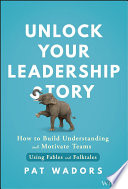

Storytelling is a fundamental aspect of human communication and plays a pivotal role in leadership. Leaders who can articulate their vision through compelling narratives can inspire and engage their teams more effectively. This idea emphasizes that leadership is not just about making decisions but also about connecting emotionally with others. By sharing personal stories, leaders can build trust and credibility, making their messages resonate on a deeper level. The book suggests that leaders should harness their unique experiences and insights to craft stories that reflect their values and mission, thereby creating a shared sense of purpose within their organizations.
Continue readingEvery leader has a unique narrative shaped by their experiences, values, and aspirations. This idea encourages leaders to reflect on their personal journeys and identify the key elements that define their leadership style. By understanding their own stories, leaders can communicate more authentically and align their actions with their core values. The book provides frameworks and exercises to help leaders articulate their narratives, making it easier to connect with their teams and stakeholders. This self-awareness is crucial for effective leadership, as it allows leaders to navigate challenges with confidence and clarity.
Continue readingCreating a culture where storytelling is encouraged can significantly enhance communication within an organization. This idea highlights the importance of fostering an environment where team members feel safe to share their stories and perspectives. By promoting storytelling, leaders can facilitate better collaboration, innovation, and problem-solving. The book offers strategies for leaders to implement storytelling practices in their teams, such as regular storytelling sessions or workshops. This cultural shift not only strengthens relationships among team members but also enhances overall organizational resilience and adaptability.
Continue readingChange is a constant in any organization, and effective leaders must be able to guide their teams through transitions. This idea focuses on the role of storytelling in change management. Leaders can use narratives to articulate the reasons behind changes, paint a vision of the future, and motivate employees to embrace new directions. The book outlines techniques for crafting change stories that resonate with employees, helping them understand the benefits and necessity of change. By framing change as a story, leaders can reduce resistance and foster a more positive attitude towards new initiatives.
Continue readingVulnerability is often seen as a weakness, but in leadership, it can be a powerful asset. This idea explores how leaders can use vulnerability to connect with their teams on a human level. By sharing their challenges and failures, leaders can create an atmosphere of openness and trust. The book argues that when leaders show vulnerability, they encourage others to do the same, leading to a more supportive and collaborative workplace. This approach can enhance team dynamics and promote a culture where feedback and learning from mistakes are valued.
Continue readingA clear and compelling vision is essential for effective leadership. This idea emphasizes the importance of articulating a vision that aligns with an organization's goals and values. The book provides guidance on how leaders can develop their vision through storytelling techniques, ensuring it is relatable and inspiring. By communicating their vision through stories, leaders can rally their teams around a common purpose and motivate them to work towards shared objectives. This clarity of vision helps in aligning efforts and resources, ultimately driving organizational success.
Continue readingAuthenticity is a cornerstone of effective leadership. This idea discusses the significance of being true to oneself and leading with integrity. The book highlights that authentic leaders are more likely to gain the trust and respect of their teams. By sharing their true stories, leaders can demonstrate their commitment to their values and mission. The book also addresses the challenges of maintaining authenticity in a corporate environment and offers strategies for leaders to stay grounded and true to their leadership narratives, even in the face of external pressures.
Continue reading